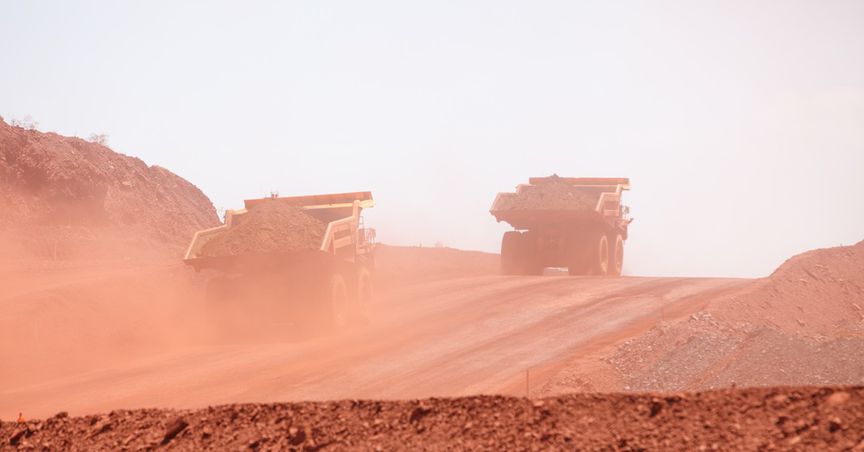Summary
- Iron ore prices are showing a consolidation after witnessing a bull run despite the COVID-19 impact.
- The iron ore mining industry had cashed on the surge in the iron ore demand over robust steel production across China.
- Iron ore export volume reached 82 million tonnes in June 2020, marking a monthly record whilst taking the 2019-20 export earnings to $102 billion.
- However, the export earnings are anticipated to decline to $80 million by 2022 over an estimated fall in prices.
- Australian iron ore miners to play the volume game as many develop large production and exporting capacity at the Pilbara region.
- The domestic volume is also expected to grow to $960 million by next year.
The iron ore mining industry that leveraged on the recent surge in the iron ore demand over robust steel production across China to capture a large tranche of the global market now is under mild heat as the supply chain has started to come back on its feet.
Record Earnings to Normalise Ahead
Iron ore exports from the continent witnessed a growth of 8 per cent through the year to reach $9.9 billion in June 2020 with a surge in the volume and average realised price on sales.
- Iron ore export volume reached 82 million tonnes in June 2020, marking a monthly record whilst taking the 2019-20 export earnings to $102 billion.
- The 2019-20 iron ore export earnings marked an increase of ~ 30.76 per cent at $102 billion, as compared to the previous annual record of $78 billion.
- However, many industry experts anticipate that the iron ore export earnings might come down to the previous level over a correction in iron ore prices in the global market.
- The Department of Industry, Innovation, and Science (DIIS) anticipates the iron ore export earnings to fall down to $80 billion by 2021-22.
Production and Export Capacity To Adjust For Demand
As a low-cost producer of the commodity the Australian domestic market is unlikely to see a pullback in volumes, and considering the recent exploration expenditure for iron ore, the volume might surge ahead.
- As per the recent data available with DIIS, iron ore exploration expenditure picked up during the second quarter of the year at $98.7 million, which remained 31 per cent up against the previous quarter.
The iron ore exploration in 2019-20 reached $361.3 million, highest annual total since 2014-2015.
However, a sluggish demand on the global front outside China can prompt the Australian iron ore miners to adjust to falls in a modest but reliable manner.
Furthermore, as the exploration expenditure grows, new supply is anticipated to hit the market, and many industrial projects are expected to roll-out soon.
- For example, significant projects in Pilbara region such as South Flank project – owned and operated by the ASX-listed iron ore behemoth BHP Group Limited (ASX:BHP), Eliwana Project – owned and operated by the ASX-listed emerging iron ore hot shot – Fortescue Metals Group Limited (ASX:FMG), and Brockman’s Marillana mine, are slated to come to production from 2021.
Just like the production volumes, the export capacity is also anticipated ahead to expand with FMG planning to increase its export capacity at Port Hedland from 20 million tonnes to 210 million per year.
Likewise, BHP has announced its plan to expand its own operations at the same region from 290 million tonnes to 330 million tonnes, suggesting that demand for iron ore from China might remain robust for several more years.
Export Volumes to Keep Up
With the surge in production capacity and export capacity, the domestic volume is also expected to grow ahead with DIIS projecting an increase of ~ 5.24 per cent from 860 million tonnes (2019-20) to 960 million tonnes (2021-22).
Also Read: Iron Ore Resurgence and Improved Rating for ASX Miners, Goldman Upgrades BHP Shares
The Global Supply Chain
Despite an economic downturn, global trades for iron ore increased in 2020 amid robust demand from China in the wake of a large internal stimulus uplifting the steel output.
Also Read: Iron Ore- The Rally From 15-Week High to a 52-Week High
At present, the Brazilian supply chain is picking up gradually with Vale – the Brazilian iron ore mammoth, ramping some of the latent capacity.
Furthermore, Vale seems confident of expanding exports over the rest of the remaining year with recent shipment from the Brazilian giant picking up eventually.
However, currently, the miner is facing some stringent regulations following the collapse of the Brumadinho dam and also due to a large increase in the number of positive COVID-19 cases across some of its operational sites.
- Considering the impact of COVID-19 across Brazil and the growing number of cases, many industry experts believe that the Brazilian supply chain might not return to normal levels until late 2022.
- Likewise, production across South Africa and Canada has also been affected by the COVID-19 outbreak, denting the labour and transport; and,
- As both, the countries represent a small tranche of the global supply chain, a gradual restore in their production capabilities is highly unlikely to fill the supply gap, created by a shortage from Brazil.
Thus, Australia, with its low-cost production and high export capabilities, could en-cash over the rising share of steel output across China.
To Know More, Do Read: Chinese Economy Gaining Strength, What’s in for the Australian Miners?
In a nutshell, a gradual recovery in the supply chain over the long-term can impact the export earnings; however, the volume growth seems unlikely to slow down amid low-cost production and high export lodgement capability of the Australian miners.
On the supply side, the demand for iron ore from China is anticipated to stay robust amid the stance of red dragons to capture a large tranche of the global steel market while eliminating the global competition looks comparatively easy as global steel production witnesses a pullback over COVID-19 outbreak.
To Know More, Do Read: China Poised to Grab the Global Steel Trade as Economies Open up for Trade




